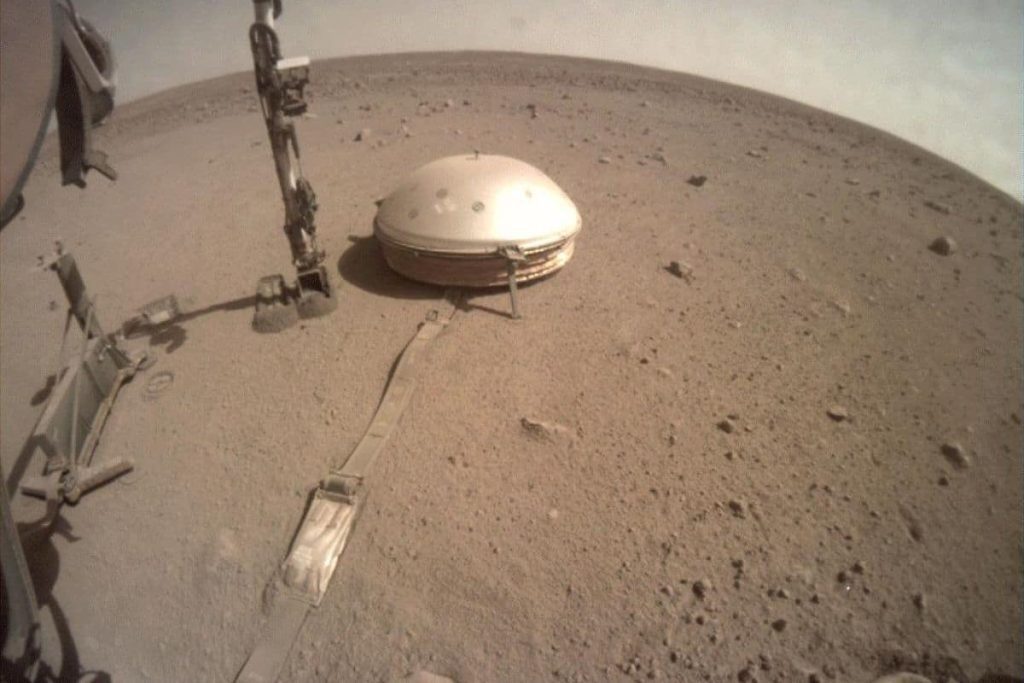The baffling Martian quake measured 4.7 on the Richter scale and lasted for hours longer than any previously detected quake.
Late on Earth night on May 4, 2022, the seismometer aboard the Mars lander InSight detected a large earthquake on the Red Planet. It soon became apparent that this Martian earthquake was far away It was the most powerful earthquake ever detected. In a new study, researchers are now revealing the first data about this unprecedented and record-breaking event.
More on the search for Martian earthquakes
Why do scientists care about Martian earthquakes? Observing earthquakes on Mars is not an end in itself, but a way to better understand the Red Planet. Seismic waves travel through the crust, mantle, and core of the Red Planet and undergo changes under the influence of the different layers within Mars and the materials that make it up. By studying the waves and the changes they go through, researchers can better understand the thickness and composition of these inner layers. Hopefully this will give them a better idea of what lies beneath the planet’s surface (such as water) and how the crust and deep interior are formed. This, in turn, provides more insight into the formation of Mars as a whole and the way the Red Planet – as well as other rocky worlds – formed.
Until recently, the earthquake in August 2021 with a magnitude of 4.2 on the Richter scale was the strongest earthquake ever. But that previous record holder has now been largely ousted.
The largest Martian earthquake
The May earthquake had a magnitude of 4.7 on the Richter scale, which made it five times stronger. “This is definitely the strongest earthquake we’ve ever seen on Mars,” researcher Taichi Kawamura said. The energy released appears to be equal to that of all previous Mars earthquakes combined. “Although the event occurred more than 2,000 kilometers from Insight, the waves recorded by the probe were so intense that our seismometer was overloaded,” said researcher John Clinton.
exactly ten
What is also remarkable is that the Martian earthquake lasted for at least 10 hours. And this is surprisingly long. In fact, the previously detected tremor did not last more than an hour. During these 10 hours, the researchers also observed surface waves moving along the crust and upper mantle for the first time. “These waves have traveled around the planet many times,” Clinton said.
epicenter
After further analysis, it appears that the epicenter was near, but still outside Cerberus Fosai; The most seismically active region on the Red Planet. And this is strange. The location of the epicenter cannot be linked to known geological features. This means that it remains unclear at present exactly how the worst earthquake ever measured on Mars originated. The reason may involve hidden features deeper in the planet’s crust, though that is still speculation.
Volcanically active
Coincidentally, as on Earth, most of the detected Martian earthquakes are thought to be caused by sudden shifts in the crust. How this happens remains an open question. Here on Earth, earthquakes are usually caused by the movement of the tectonic plates that make up the Earth’s surface relative to each other. However, the surface of Mars is not composed of plates. Therefore, it is suspected that the earthquakes originated in volcanically active regions of the Red Planet.
The waves are high and low frequency
Finally, Marsquake in May was exceptional for one final reason. Scientists believe that Martian quakes have “two flavors.” On the other hand, we know high-frequency waves that are characterized by fast but short vibrations. On the other hand, we know low-frequency waves, in which the surface moves slowly, but with a greater amplitude. The May-Mars earthquake was rare, as it had both high-frequency and low-frequency characteristics. “This probably means that the low- and high-frequency tremors that were previously recorded are actually two sides of the same coin,” speculates Kawamura.
While the researchers’ study answered some questions about the record-breaking Mars earthquake, it also raised new questions. Whether Insight can still help answer this is questionable. Martian dust falling on solar panels is slow but sure fatal to the lander. In recent months, researchers have seen the probe lose more and more power as a result. So insight is not expected to live long. “However, we are very pleased that with the end of Insight’s working life, we were able to witness this remarkable event,” said Kawamura. “Based on the data collected, I can only say that the mission was an extraordinary success.”

“Thinker. Coffeeaholic. Award-winning gamer. Web trailblazer. Pop culture scholar. Beer guru. Food specialist.”







More Stories
Comet Tsuchinshan-Atlas is ready to shine this fall
Sonos isn’t bringing back its old app after all
Indiana Jones and the Great Circle is coming to PS5 in spring 2025